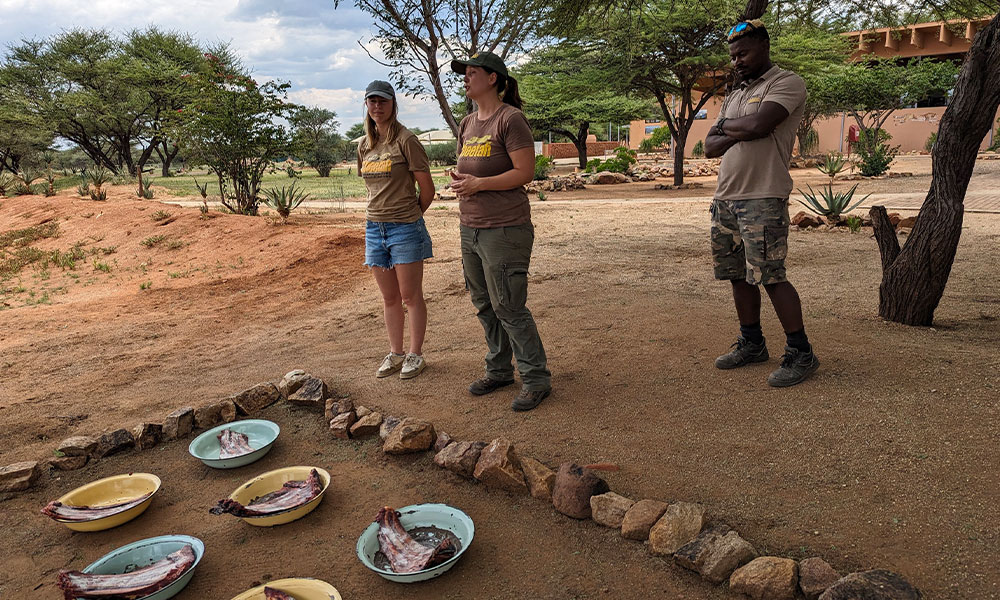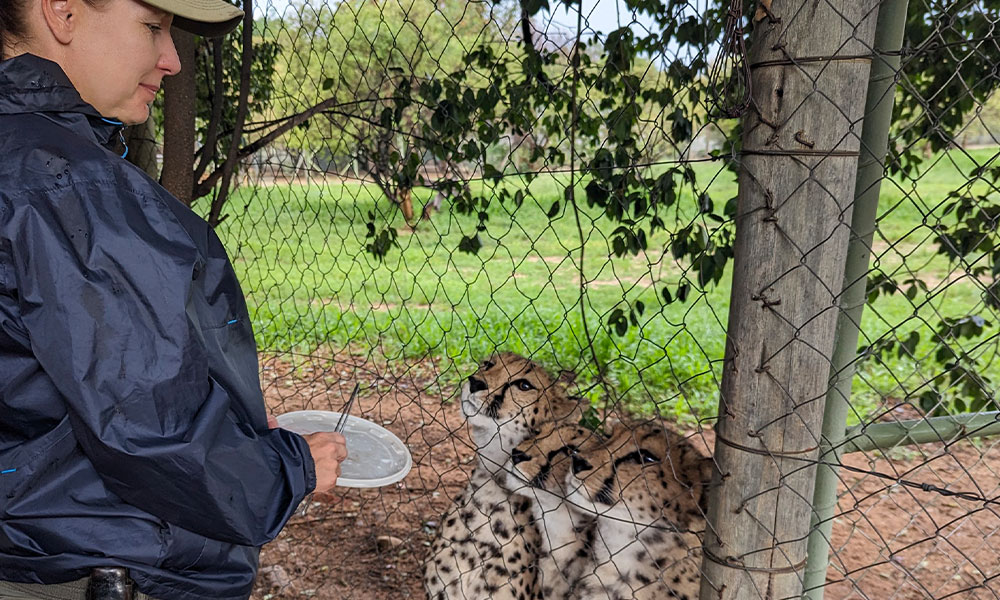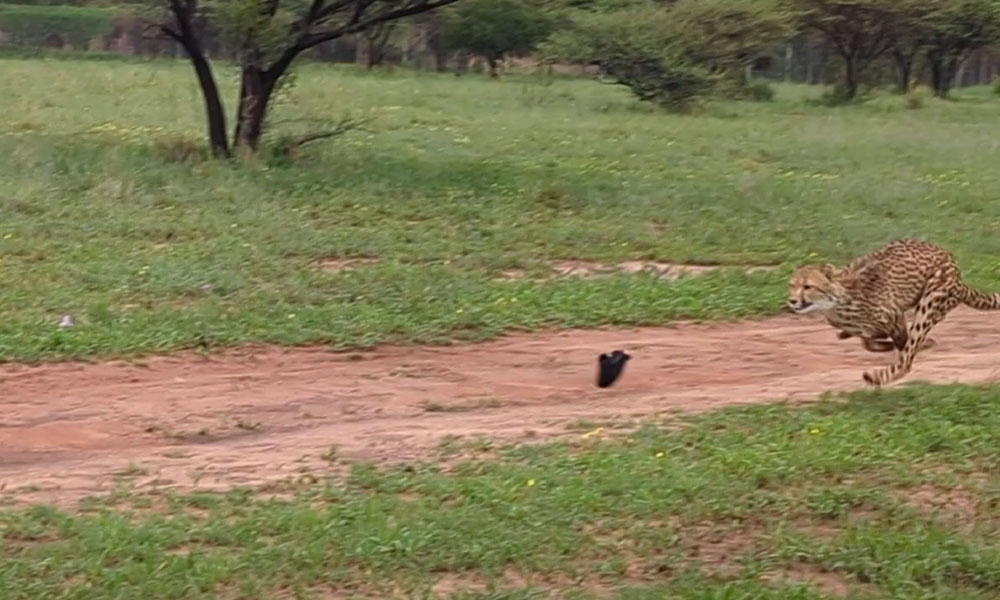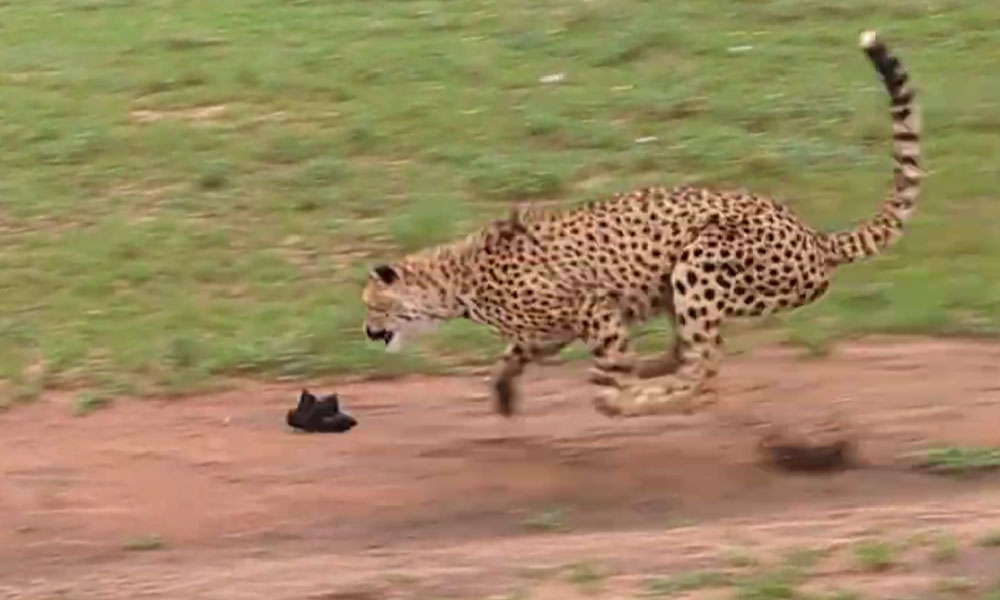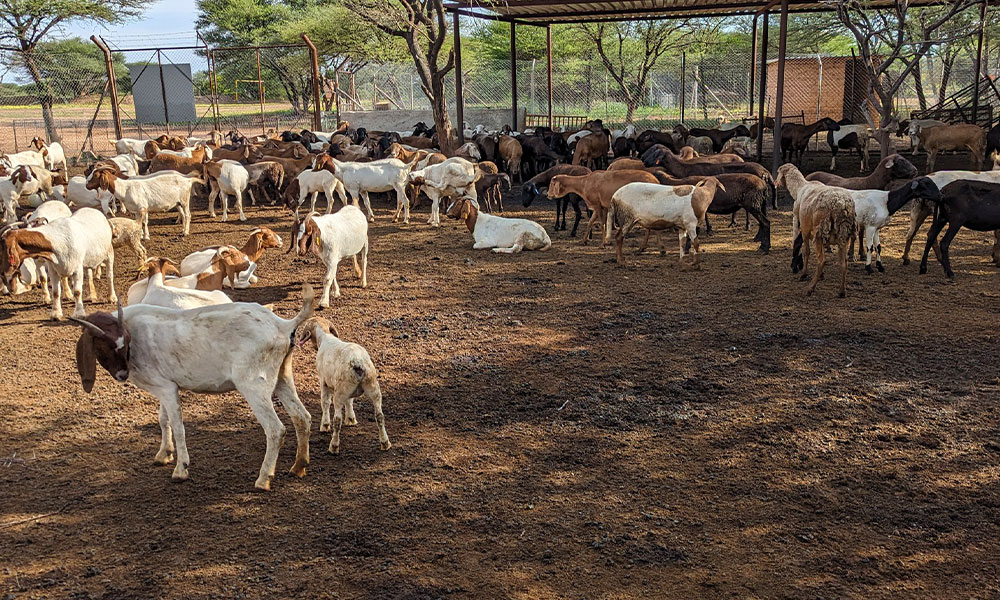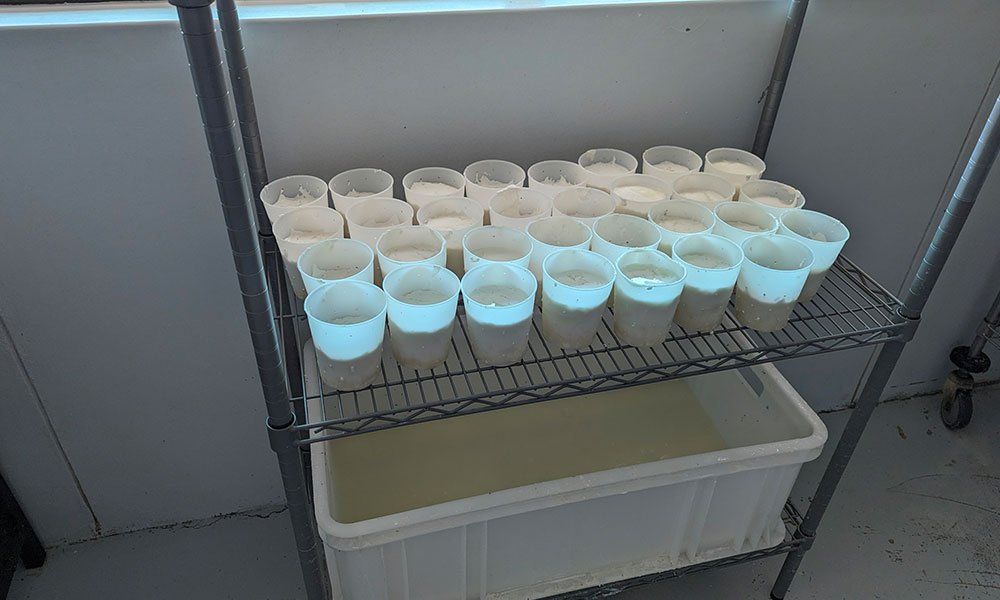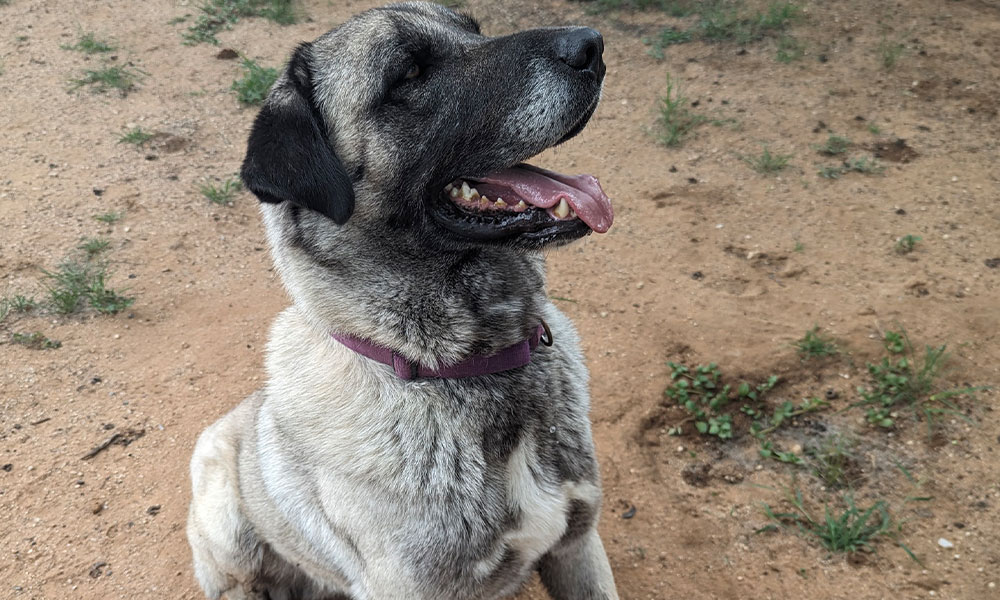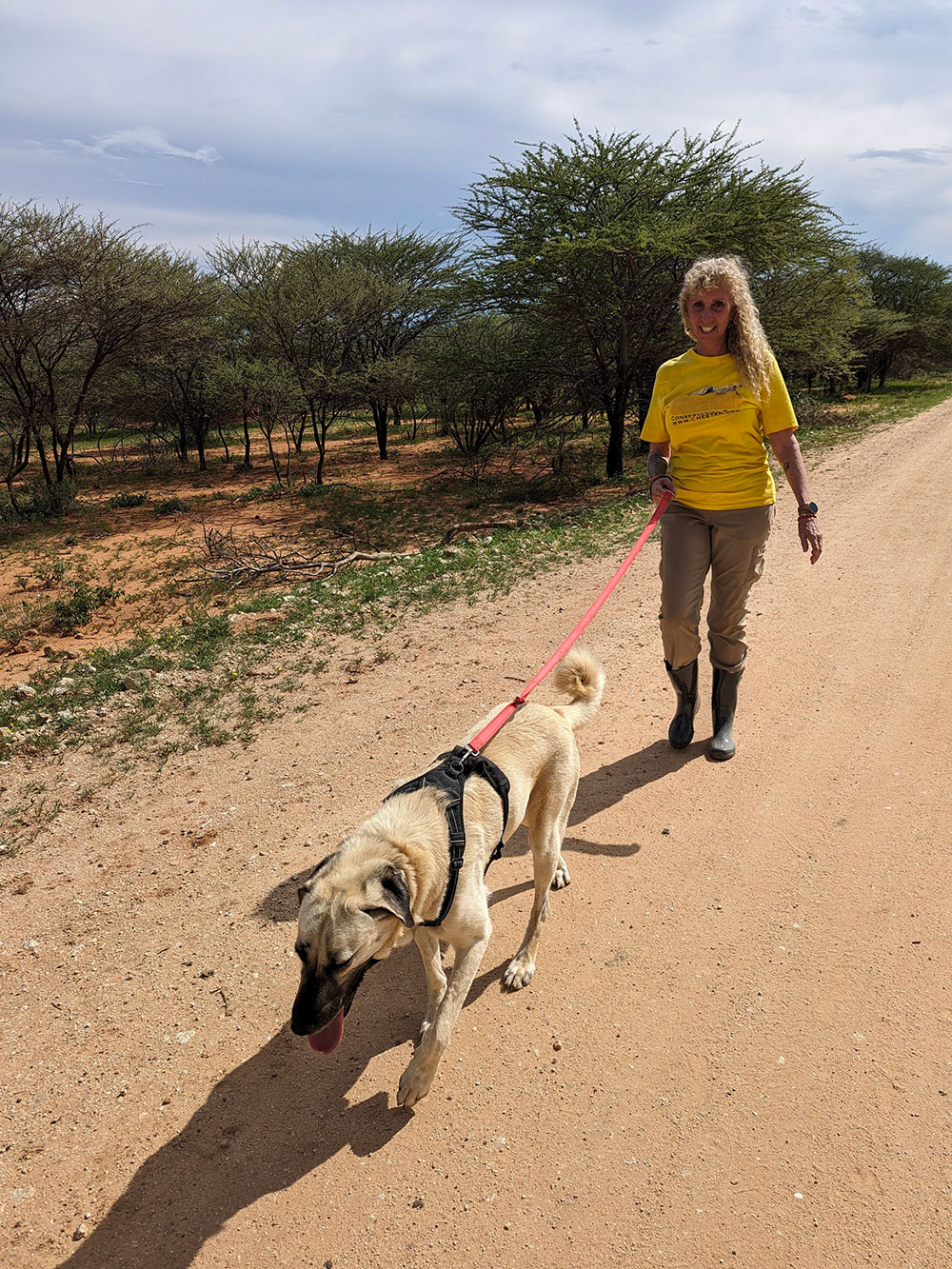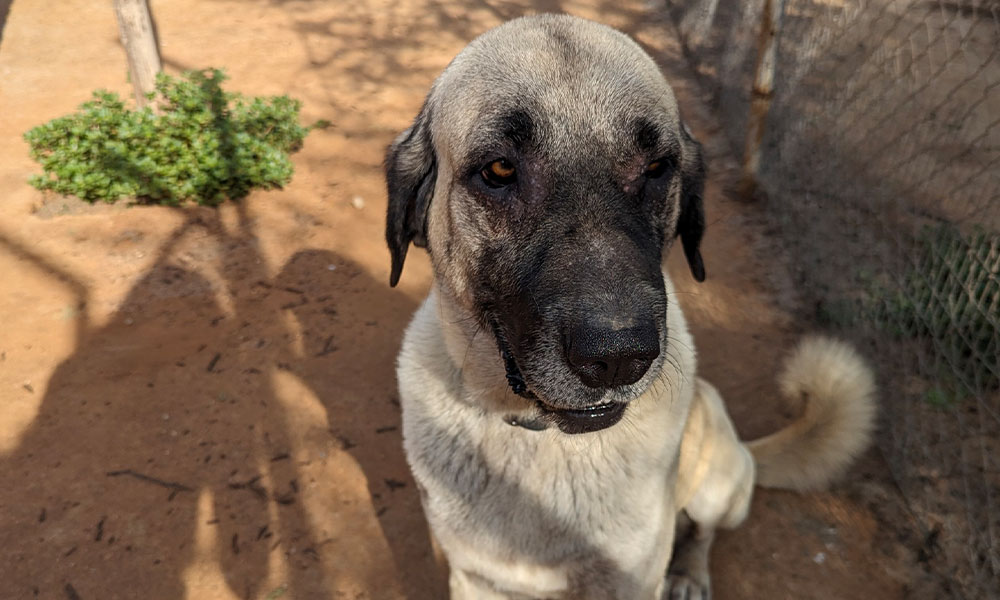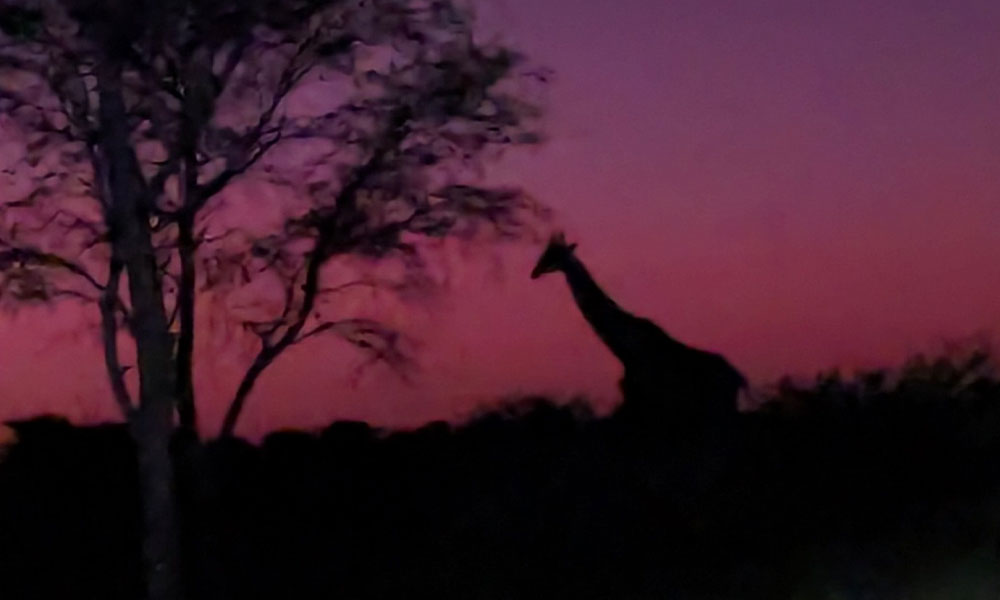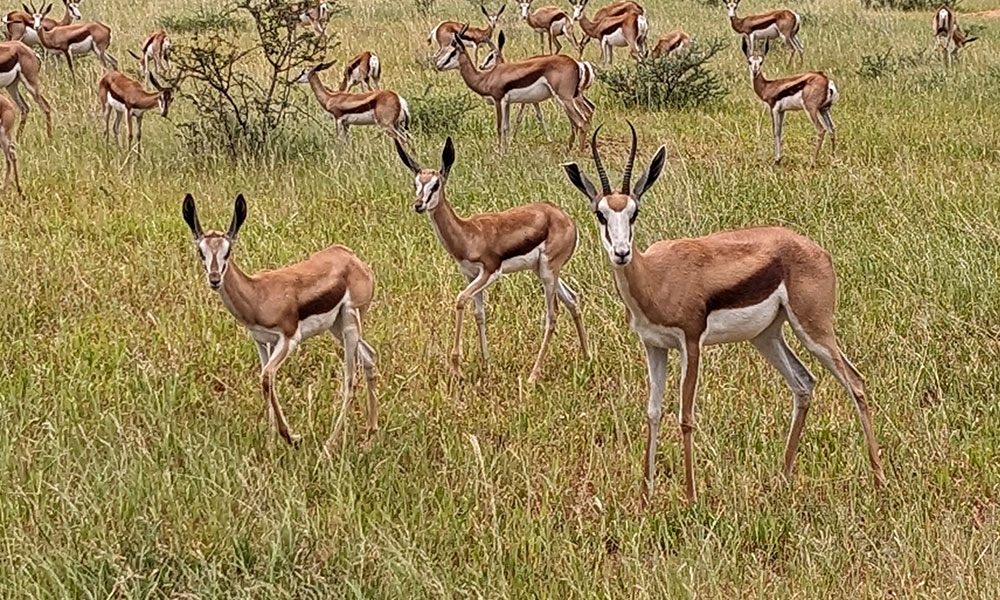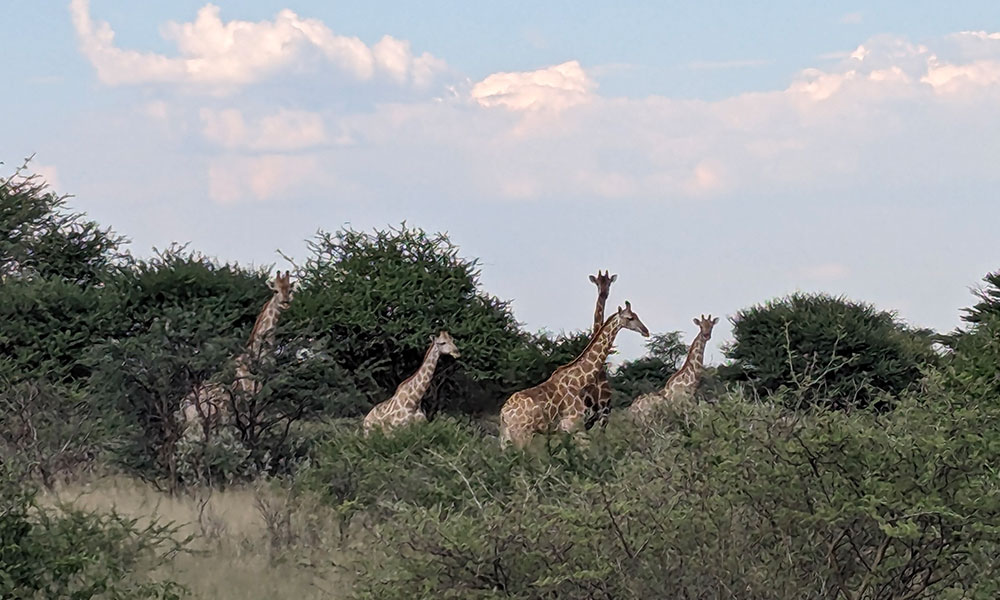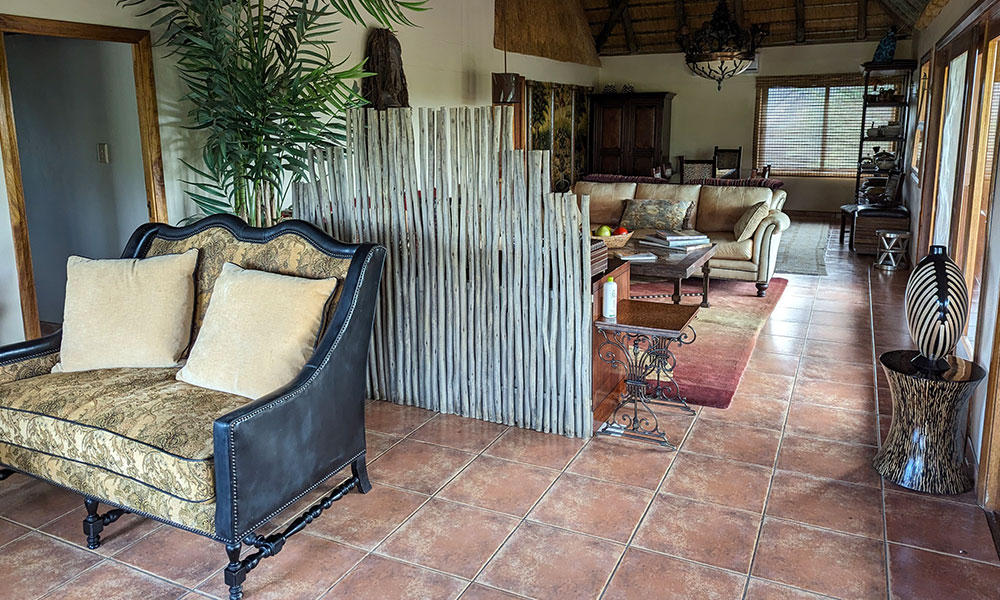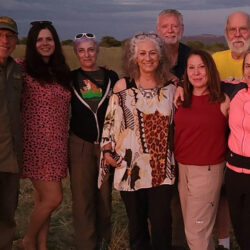Four Weeks at CCF as a Working Guest – Sue Heim and My Time in Namibia
-
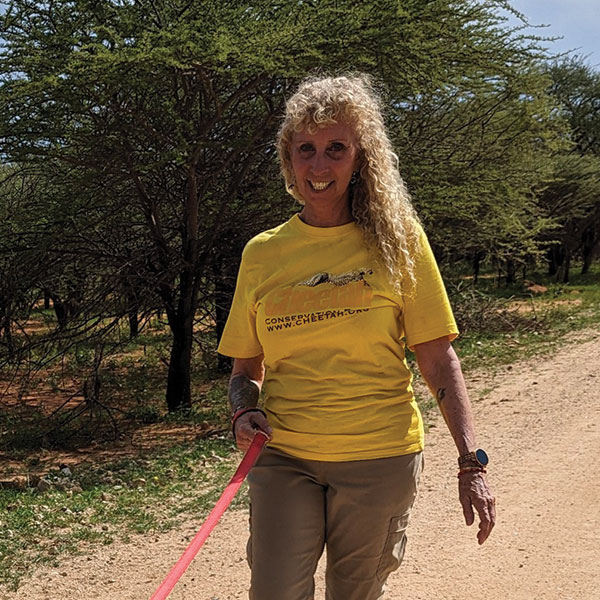
- by Sue Heim October 23, 2024
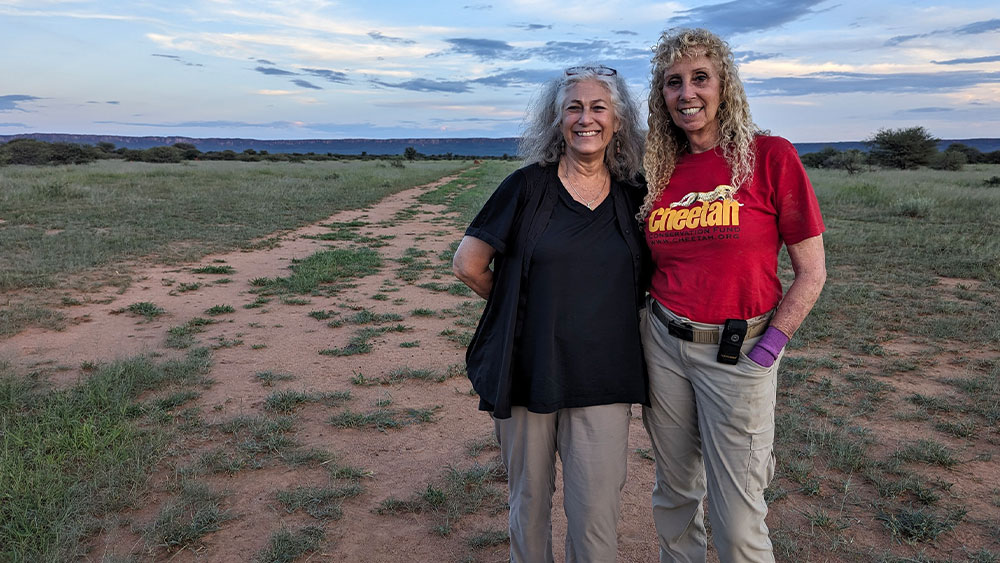
My name is Sue Heim, and I am both a volunteer and donor with CCF. I wanted to learn all I could about CCF, how the Research and Education Centre in Namibia is saving the cheetah, as well as helping Namibia and all of Africa. While I work in audit and compliance for a large security company during the week, my weekends have been filled with talking to guests as an interpretive volunteer (or docent) at the San Diego Zoo. I talk about a large variety of animals, but my favourite is always the cheetah. In 2022, I decided I wanted to do more than just be a donor with CCF, and became a CCF volunteer with the Southern California Chapter. As a volunteer, I help Jess Sorrentino, CCF’s Development Associate (who lives near me in San Diego) to spread the word about the cheetah. I met Dr Laurie Marker in April 2023, and was immediately impressed with her passion, and CCF’s mission to save the cheetah. In October of that same year, I had the opportunity to spend several hours talking with Dr Marker, and vowed I needed to learn more and do more. In December 2023, I finally submitted my application to be a working guest in Namibia, and spent four weeks at CCF in February. Believe me, four weeks wasn’t nearly enough time! I fell in love with Namibia, its people, and most importantly, the Cheetah Conservation Fund’s centre and all the people who work there (both employees and volunteers). The scenery is spectacular, and I didn’t mind the heat (often 90F/32C) with rain (complete with thunder and lightning) in the late afternoons to help cool down the day.
Dr Laurie Marker’s motto is “save the cheetah, change the world” and the epicenter of all the work happens 35 minutes north of Otjiwarango, in a fabulous compound located in the bush (actually, on the 50,000 hectare, or 150,000 acre, preserve owned by CCF). As a working guest, I was assigned to work in almost every area alongside staff, sharing the schedule with the interns and other volunteers visiting CCF. I helped care for almost 30 cheetah; fed and walked the livestock guarding dogs (LGDs); and made feta cheese and ice cream in the Dancing Goat Creamery. I helped make goat milk fudge in the Cheetah Cafe (along with a few other items), harvested a bounty of produce from the garden, and photographed the collaring and ultimate release of three orphaned cheetah siblings. I have experience with horses, and had the honor to help care for CCF’s five horses twice a day along with Dr Marker. Because I wanted to learn and experience it all, I asked to asked to join the vet team for a goat check (helping to set a broken leg that we found on a goat during the check); went out with the scat detection team to train and test these dogs; got up early to go help milk the goats in the morning; and joined the ecology team and interns as they went out to perform bird and animal counts.
I went with the attitude that I would never say “no” and would do all that was requested of me. I learned where the cheetah’s preferred to leave their scat in their very large yards, how to test a female LGD for hormones to learn see if she was in estruus (she was!), and quickly overcame my aversion (as a vegetarian) to cutting up meat for the cheetah during diet prep. (I also cannot forget that I washed dishes – so many dishes, no matter where I was working!)
About Those Cheetah
The cheetah at CCF are, for the most part, not able to be released back into the wild. If we received cheetah cubs older than 4 months, they would be good candidates for re-releasing. However, cheetah cubs less than 4 months of age have not had enough time with their mother, who would eventually have taught them how to hunt, what to hunt, and just as importantly, what predators to avoid. The cheetah who are candidates for re-release are kept far away from the daily activities of work, guests, and volunteers. These cheetah are intentionally kept wild, having contact only with those of us who go out six times a week to feed them, refresh their water, and clean up. (All cheetah at CCF are fasted one day a week. This is meant to emulate their eating habits in the wild.) When I was there, we had 30 cheetah to take care of, but by the time I left, we had 27. They varied in age from cubs (not yet a year) to a few longtime residents (14 years old). Daily feeding meant driving around to the different habitats for those who were not located in the yards near the center pens, and feeding, watering, and cleaning. We would occasionally “run” these cheetah, to keep their muscles toned with exercise. Those in the Center Pen area were fed midday, and all entered the pens from their yards with much alacrity. The cheetahs all live in groups of 3 or 4 mostly. These coalitions were formed either because they are siblings, or because of their ages and personalities). Very few cheetah were solitary in pens.
How the Model Farm is Used – Teaching by Example
CCF runs a model farm, so they can teach farmers how to protect their herds of goats, sheep, and cattle. This is a much more effective way for the farmers to understand the importance of good enclosures, how to protect their herds, and the importance of reducing human-wildlife conflict. The LGDs are inserted into goat herds as puppies (starting out with the goat kids) and they grow up knowing that their job is to protect the goats. I found that the instinct for some LGDs was so great, that those housed near the goat herds almost always tried to escape their yards during feeding – they really needed to get to those goats! Don’t forget about all that fresh goat milk! Dancing Goat Creamery shows how fresh goat milk can be pasteurized, and turned into delicious cheeses, yogurt, and ice creams, which farmers can then sell in their local communities. Side note: The feta cheese was my favourite – and if I could have figured out how to bring it home with me, I would have – while the ice cream was a delicious treat at the end of the day!! Working in the creamery meant that you would see immediate results, with cheeses set out to dry and cure, or ice cream freezing in the freezers. All items made were used in the meals served at the community dining area, in the Cheetah Cafe, or in meals served to guests staying at Cheetah View Lodge or Babson House.
You Said There Are Dogs?
CCF raises dogs for two different, but equally important reasons. The livestock guarding dogs are usually Anatolian shepherds or Kangals – big dogs, with a loud bark, that will definitely deter any cheetah (who are non confrontational by nature). But the LGDs will also protect their herds from other intruders, including leopards and snakes! These dogs have a biteforce that is greater than that of a lion! I loved working with the dogs – after all, these were the animals I could touch, petting and hugging them. (In Namibia, it is illegal to pet a cheetah. The Namibian government wants to enforce the fact that cheetah are not pets.) Most dogs lived in their own pens, but the pens were in groups. We would feed the dogs twice a day, and take care of water bowls and scooping in their yards. At the end of the day, if it wasn’t too hot out, we would take various different dogs out for walks.
See photos:
LGD Feb 10.jpg; Oonkondo LGD Feb 10.jpg; Walking Clio Feb 6.jpg
We also have other dogs that are scat detection dogs. These dogs are trained to seek out cheetah scat. The scat is used in several ways. If a farmer thinks there is a cheetah nearby, the dogs help confirm by scenting the scat. The scat is also collected, and undergo testing to identify the cheetah (male or female), if the female is in estruus, what the cheetah has been eating, and other health markers. The scat detection dogs are taken out daily, and are put through their paces to detect scat in a monitored environment.

Reversing Habitat Loss
CCF is actively working to reverse habitat loss, not only in Namibia, but all over Africa. CCF Bush was established to remove the invasive thornbush, and turn it into a log that can be burned for fuel or heat, called Bushblok. Removing thornbush enables the cheetah to find prey species, and for prey species to flourish because the savannah is returned to extensive grasslands. I did not get an opportunity to see the Bushblok operation in action, so that will be my goal for my next trip (stay tuned, this was the first of many visits!). The teams will cut down invasive thornbush in the cheetah yards, as well as areas of the preserve. I know that some of my sunset pictures were so breathtaking because the savannah showed grasses in the sunset. See photos:
Cheetah Yard Feb 6.jpg; Storm in the Distance Waterberg Plateau Feb 27.jpg
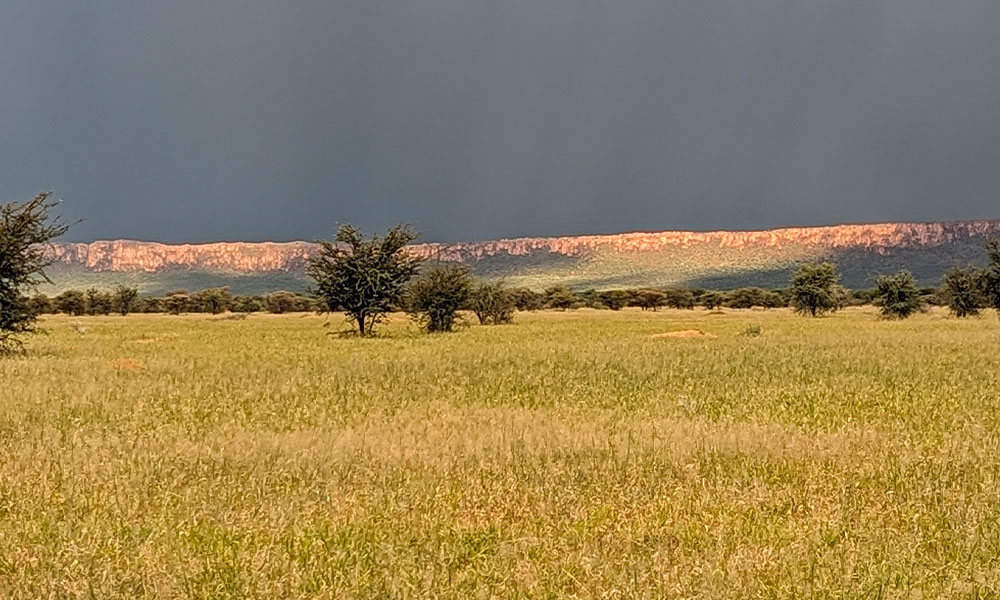

Visiting for a Day or Staying for Several
My initial goal was to find out all I could about CCF and how to help the cheetah. While there, I realized I also had a unique opportunity to learn see what it would be like to be a guest visiting CCF for a day or two (or more!). Guests can learn about the cheetah, taking advantage of the several tours offered (including the cheetah run or cheetah drive). While I was at CCF, I met many guests from all over the world, who stayed at the Cheetah View Lodge or Babson House. I visited both facilities so I could learn see what each was like and could help promote guests visiting and staying at CCF. The Lodge has five units, each with a fabulous view of the garden surrounding the unit or the landscape (and maybe even the waterhole). Stays here include breakfast and dinner (and the meals are fabulous). The Babson House is a luxury guesthouse that can accommodate six people. A private chef prepares meals here, and guests can sit on the veranda and watch some of our resident cheetah below. Both lodgings are created with comfort and luxury in mind, and include comfortable seating, lovely views, and beautiful artwork. Overnight guests are also offered the Safari Sundowner Drive into CCF’s “Little Serengeti” with wildlife galore.
You don’t need to stay at CCF to enjoy the daily activities – you can be a day visitor and come to watch the cheetah run, view the afternoon feeding in the Center Pen area, or receive a guided walking tour. After that, guests are free to wander through the museum, and more. Day visitors can book activities online or by telephone.
Final Thoughts
I had no expectations of what I would be doing as a working guest. I truly just hoped I would be able to help with the cheetah and dogs, and learn as much as I could about the cheetah in the wild. I learned so much more! I met so many fabulous people – from the staff to the interns from all over the world, to our guests. Some of these are going to be lifelong friends as well! After the first week, I settled into a routine that was comfortable. I ate meals at the communal Hot Spot dining area, walked 10’s of thousands of steps, and slept like a log every night. I didn’t just stay at the research centre, but also managed to visit Etosha National Park on a quick weekend getaway, and go shopping in Otjiwarongo (where I bought a lovely formal gown for a gala I was to attend the weekend after I returned home). I shopped in the Spar Supermarkets in Otjiwarongo and Outjie and felt right at home – especially in the produce section where I even bought avocados! I went on numerous game and night drives, and so many wild animals, that I lost count! I even became a bit of a birder, being in total awe of some of the birds, especially the Kori Bustard! My experience at CCF was, quite literally, life-altering. I did so much, learned so much, helped so much, and had so much fun doing it all, that I cannot wait to return!
Related Reading
-
May 24, 2024
Unexpected Discovery in My Homeland -
March 1, 2024
My Hands-On Conservation Experience with CCF -
October 6, 2023
New York to Namibia – Visiting CCF

